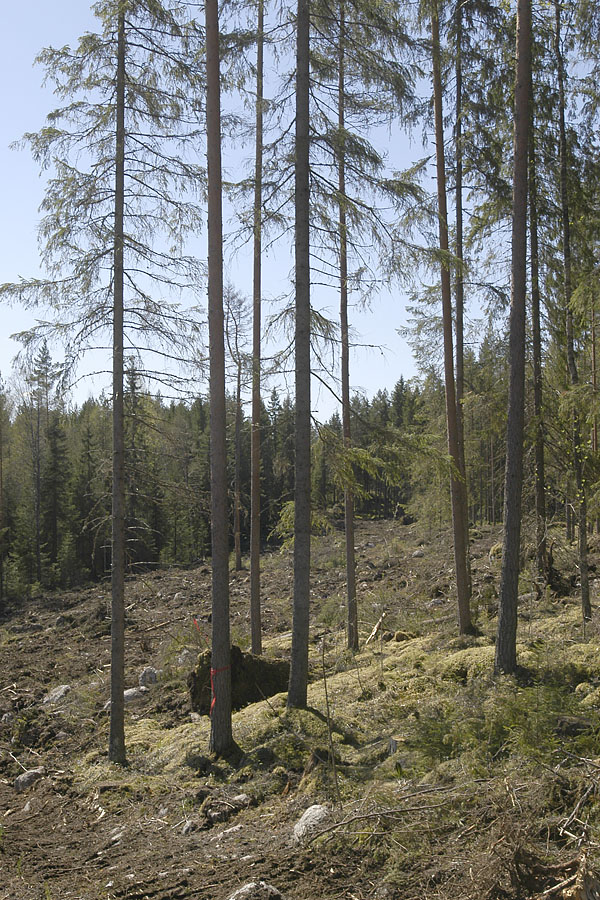Nature management has succeeded in Finnish forests

A new evaluation of endangered species by environmental authorities shows that the measures taken to safeguard forest nature values have been effective.
The 2010 Red List of Finnish Species published by the Finnish Ministry of the Environment and the Finnish Environment Centre makes comforting reading for the forest sector. In a press conference today, the researchers behind the evaluation said that of all habitats it is the forest where the conditions for threatened species have developed most favourably.
”As to forests, the situation is good, which is comforting because of the extensive measures taken to safeguard threatened species. If the results were worse, our only other option might be to give up,” says Mr. Pertti Rassi, Environment Counsellor at the Ministry and leader of the evaluation work.
The conditions for short-lived species, such as beetles, have improved the most. The conditions for species with longer lifetimes have not improved as much.
However, thanks to measures to safeguard biodiversity, even long-lived species might experience some improvement in times to come, but so far this is not visible precisely because of their longer lives. ”This is possible, but only if the measures are continued,” says Mr. Esko Hyvärinen, protection biologist at the state-owned forestry company, Metsähallitus.
Best measure is to save aspens

According to Rassi, the best forestry measure has been the saving of retention trees, and especially large aspens, in connection with regeneration fellings. This is somewhat of a surprise, for saving retention trees has been considered the least effective measure for safeguarding forest biodiversity.
According to Hyvärinen, researchers have always regarded it as a good measure. ”It could be that the media have held the wrong view about this,” says Hyvärinen.
Furthermore, the conditions for species depending on forest fires have improved because of artificial fires. ”This is due to the fact that these species move very actively. The forest fires in Russia may also have had a certain effect,” says Hyvärinen.
Of all endangered species, the share of the species which prioritise forest habitats is 36.2 percent, or 814 species. Of these, nearly half prioritise herb-rich forests. The share of species prioritising old-growth forests is also large.
However, forestry activities are the most important cause of the endangered status of only three quarters of these species. For example, the main cause of the endangered status of large mammals, such as the bear and the wolf, is not forestry, but hunting.
Alpine species may disappear

The most endangered are the species living in the alpine heaths and meadows of Northern Finland, where the biodiversity has clearly decreased. ”I have long been of the opinion that the climate change and excessive grazing by reindeer is a lethal combination for nature,” says Rassi.
The future of alpine habitats does not look good, if the climate change progresses. ”The species cannot move northwards because of the Arctic Sea barring the way. The danger exists that we will lose these species completely,” says Rassi.
Nevertheless, some benefits may also be gained from the climate change, for the conditions for some endangered species have improved in rural cultural habitats. ”This is hardly due to protection measures, although they have been taken in agriculture. The obvious cause is the exceptionally warm summers in the beginning of the 2000’s,” says Rassi.
Thus, if the warm summers are caused by the climate change, as is often said, it has been beneficial for these habitats.
As to species prioritising mires and aquatic habitats, and especially aquatic birds, the situation is clearly worse. The causes of this may lie outside Finland, in the wintering areas of the birds. The conditions for species prioritising littoral areas and rock outcrops are also bad.
Share of endangered species has not changed
All in all, 45,000 species were found in Finland. The degree of endangeredness of some 21,400 of them could be evaluated.
The number of endangered species was 2,247, or roughly 10 percent of those evaluated. The percentage was the same in the previous evaluation ten years ago.
Equally comprehensive evaluations have only been carried out in Norway and Sweden, where the results have largely been the same. However, in these countries the causes of the endangered status have not been evaluated as thoroughly as in Finland.
The next evaluation is likely to be completed after another ten years. What might be the situation then?
”This is impossible to forecast because of so many uncertainties. One of the largest is the climate change,” says Rassi.
Kirjoita kommentti